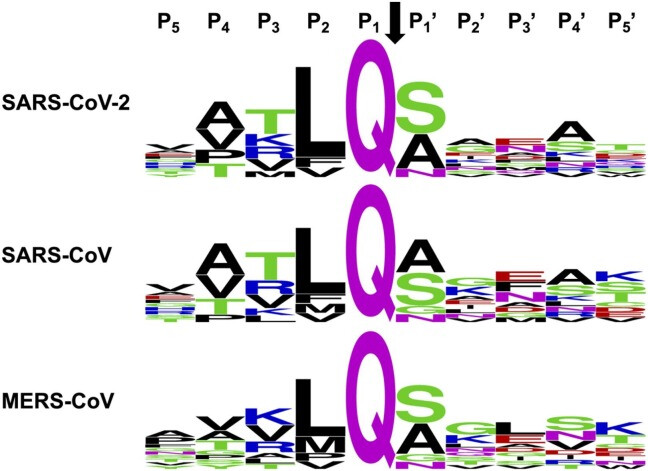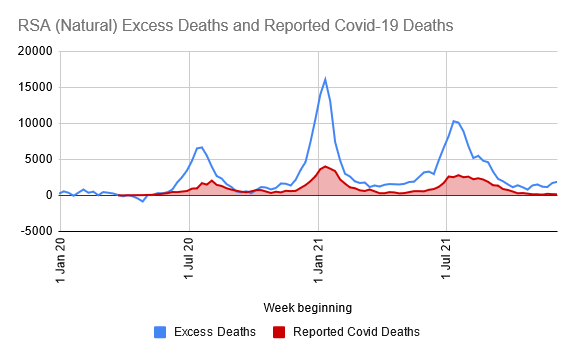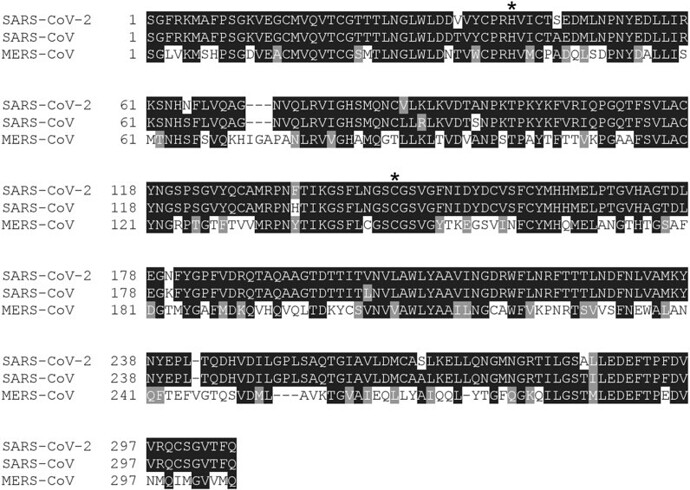Well, the pills do look an great tool in the COVID fight and are going to be licensed shortly. I agree with you that they arent going to help get us out of this wave, at least initiially.
Lol, welcome back Churchill.
Completely agree. ‘Every six months in this fight will be better than the last six months’. This peak likely to be the shortest, given (IMO) we’re all gonna get it.
I’m going to make a general Thumper’s mom request that if you can’t say anything nice about somebody when you post in this thread you don’t say anything at all. That includes taking unnecessary swipes at how certain countries with historical links are handling COVID.
It’s been a mostly productive conversation in here lately and “lol [username]” and “We in [English speaking country] are handling things far better than [another English speaking country]” type posts are not productive.
It’s almost like some Africans have built in protection…
The study focused on characterizing blood samples that were collected from 120 Sierra Leonean patients before SARS-CoV-2 emerged. They compared these blood samples to those of 79 Americans who had not been exposed to SARS-CoV-2.
Less than five percent of the American samples reacted to SARS-CoV-2 antigen. Since these people are confirmed not to have been exposed to SARS-CoV-2, then this 5% must come from cross-reaction with seasonal coronaviruses that circulate in the US, i.e. the four familiar ones. In comparison, fully 52% of blood samples from Sierra Leoneans collected prior to the Covid-19 pandemic contained antibodies that cross-reacted with SARS-CoV-2. If the same seasonal coronaviruses circulate in the US and Sierra Leone, then shouldn’t one expect to see roughly the same rate of cross-reactivity? A very plausible explanation is that there is a coronavirus circulating in Sierra Leone, but not the US, that is much more cross-reactive with SARS-CoV-2 than the familiar seasonal coronaviruses.
[S]cientists worked with “pseudoviruses” that had been engineered to have the same antigens as SARS-CoV-2, but lack key parts of the virus so they are not pathogenic and may be experimented with in the lab much more safely. Whereas prior studies have typically found that immune response to seasonal coronavirus is not neutralizing for SARS-CoV-2, roughly one quarter of the Sierra Leonean samples did neutralize SARS-CoV-2.
Forbes though…
I think it’s going to be very difficult for the virus to escape this drug.
Wookie already explained some of this, but briefly, SARS-CoV-2 generates many of its component proteins as one long polyprotein and then cuts this into its protein components, like how when you get a board game you press all the components out of one sheet of cardboard. The virus enzyme that does this is called a protease. The protease finds particular amino acid sequences (“cleavage sites”) that are like the “cut here” dotted lines, then catalyses the cutting reaction using a critical active site it possesses.
It turns out that this protease is extremely specific about which amino acid it wants in the position right before the cleavage site: it wants to see a glutamine (Q in single letter code). And this preference is highly conserved, meaning it doesn’t mutate. The SARS-CoV-2 protease has only 50% sequence identity with the MERS-CoV protease, meaning a lot of mutation has happened to its RNA sequence as the two viruses diverged evolutionarily. This is how that looks graphically:
There’s a lot of differences there. But now if we look at the cleavage sites recognised by the proteases, this is kind of a cool graphic, each stack represents amino acids which sometimes occur at each position:

At every position except P1, amino acids vary, but at P1 both COVID and MERS are like, glutamine and only glutamine, nothing else will do. Side note, surely there’s some way to monetize this fact in the QAnon community.
Happily, it turns out that humans do not have any proteases of this type which target a glutamine at position 1. So the brief for Pfizer was was to create a molecule which binds to the active site while simultaneously mimicking having a glutamine in position 1, a type of drug called a protein mimetic. And that’s exactly what it does - it hooks directly into the active site of exactly this type of protease, neutralizing it.
This is a huge problem for the virus because this is a lock and key situation, where if you vary either the key or the lock, the result is the virus being unable to assemble its components. Moreover, the key has to fit in multiple locks, further constraining the ways in which either can be changed. So while you never know what evolution can throw up, it’s going to be extremely difficult for the virus to escape from this quandary. I will be very surprised if we see an evasion variant.
An underreported aspect of Paxlovid is that, as should now be obvious, it’s likely to be effective against any SARS-like coronavirus. And indeed, Pfizer report “potent antiviral in vitro activity against… other known coronaviruses, suggesting its potential as a therapeutic for multiple types of coronavirus infections”.
Technically Paxlovid is just the nirmatrelvir and adding the ritonavir is just a particular formulation of it - you could use another CYP3A4 inhibitor or the drug also works on its own, you would just need to dose it more frequently.
Right, thanks
Good post, thanks for the additional detail. Re: your last part, we’ve got a cure for the (well, some) common cold(s)! At least when the patent expires and this can be made generically and sold for pennies a dose.
Biden warns of a ‘winter of severe illness and death’ for unvaccinated
US president Joe Biden says the unvaccinated face “a winter of severe illness and death”
After receiving a briefing on the pandemic from advisers, Biden said the Omicron variant is “now spreading and it’s going to increase”.
Biden urged Americans to get vaccinated and get their boosters as soon as possibl, saying:.
For the unvaccinated, we are looking at a winter of severe illness and death.”
A wave of new Omicron cases is beginning to surge in America and could peak as early as January, the Centers for Disease Controls (CDC) has warned, as states are scrambling to prepare for overloaded hospitals.
The Omicron variant accounted for nearly 3% of Covid cases in the US as of Saturday – up from only 0.4% the week before, according to data from the CDC. The variant is expected to continue rising rapidly, based on the experiences of other countries and could be dominant within weeks.
“I suspect that those numbers are going to shoot up dramatically in the next couple of weeks,” said Céline Gounder, infectious disease specialist and epidemiologist at New York University and Bellevue Hospital, on Wednesday. She expects an Omicron wave to peak in late January and then come down sometime in February.
Omicron ‘moving’ slower in some countries than the UK. Detected just 10 days later than say the UK but only 3% of covid cases to date. Peaking in 6 weeks. Optimistic IMO. Still time to change the booster to 3 months after 2nd dose and be covered.
From the start of the article:
One of the enduring mysteries of the Covid-19 pandemic is why the death rate is so low in Sub-Saharan Africa in particular. It’s almost certain that Covid-19 has been under-reported in Africa, much of which lacks access to tests. But, under-reporting could hardly account for the entire pattern.
O rly?
South Africa is at 467 excess deaths per 100000 people through the pandemic, enough to make it one of the hardest hit spots in the world if most of those are attributable to covid.

And it sure looks like most of them are attributable to covid.
South Africa’s covid tracking seems to be better than the average African country, so, uh, if they’re underreporting covid deaths this badly, I think underreporting is the leading hypothesis.
Doesn’t quite make sense how this mystery coronavirus made it all across Sub-Saharan Africa but somehow didn’t go worldwide. Do cold typically do that?
but it could also be a non-transmittable coronavirus present in an animals population.
and don’t think he’ll make it tbh.
Won’t follow up on him. Stopped doing that a long time ago for my sanity.
Is 50% of the population of Sierra Leone in frequent contact with agricultural animals? I wouldn’t think so. But if that were the case, it would not necessarily be something that all of Africa has in common.
It’d be pretty ridiculous to repeat the mistakes made about India. I’d suggest pumping the breaks.
I’d put very little value in this type of non-clinical research.
Common cold fucked around and found out.
Anyone in the US who isn’t at least 6 months past their second dose right now likely is a tough sell on that booster anyway.
What Wookie said but also if it was a zoonotic virus it’s surprising how mild that strain was.
i’m not sure. agriculture is an obvious possibility, but from a purely mathematical diffusion process, you can have a somewhat local rat or bat populations, which doesn’t spread it efficiently outside of that geography and species. and human data collection happened to aggregate that into a country with the help of noise.
if evolutionary changes are at play, the virus is a descendent of something, and its lineage was both more and less transmittable at different times in the past.
